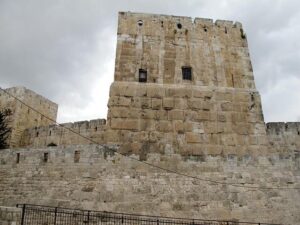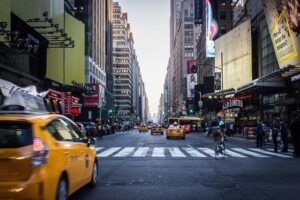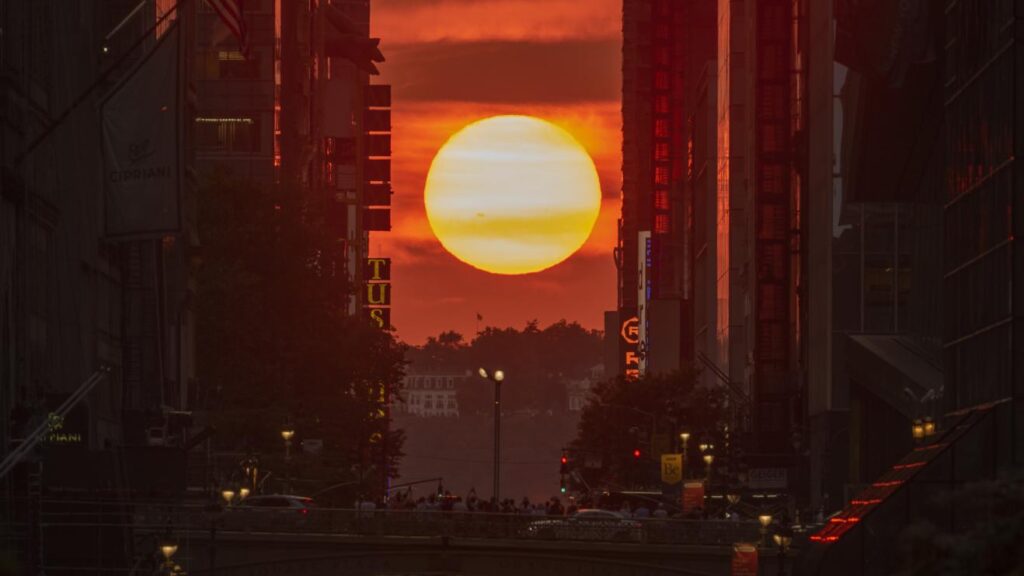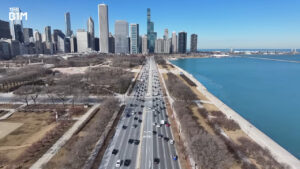Manhattanhenge, the captivating urban phenomenon where the setting sun aligns perfectly with the east-west streets of Manhattan’s grid, is set to return to New York City this week. Drawing crowds of photographers, residents, and tourists alike, the event offers a rare and striking visual spectacle as golden rays illuminate the city’s iconic skyline. This article explores what Manhattanhenge is, the science behind the alignment, and the best spots across the city to witness this fleeting natural marvel.
Manhattanhenge Illuminates New York City Streets with Stunning Sunset Alignments
Twice a year, the streets of New York City become a canvas for a breathtaking celestial event as the sun perfectly aligns with the city’s iconic grid. This spectacle transforms familiar avenues into glowing corridors of golden light, captivating both locals and tourists alike. As the sun sinks toward the horizon, bridges, buildings, and bustling streets are bathed in a warm, radiant hue, creating unforgettable photographic moments and a unique way to experience the urban landscape. The phenomenon not only highlights the precision of Manhattan’s layout but also reconnects city dwellers with the natural rhythms of the cosmos above.
Best spots to catch the glow:
- 42nd Street between First and Second Avenue
- 14th Street near Union Square
- 23rd Street near Park Avenue South
- 34th Street from Lexington to Third Avenue
| Date | Time | Expected Sunset Angle |
|---|---|---|
| May 29 | 8:15 PM | 295° WNW |
| July 12 | 8:25 PM | 295° WNW |
Understanding the Science Behind Manhattanhenge and Its Celestial Timing
At the core of this captivating event lies the precise alignment of the sun with Manhattan’s iconic street grid. Twice a year—typically around late May and mid-July—the setting sun perfectly aligns with the east-west streets, creating a spectacular visual effect where sunlight floods the corridors between skyscrapers. This phenomenon is a direct result of Manhattan’s unique urban planning, combined with the Earth’s tilt and orbital position during these specific dates.
The timing of Manhattanhenge hinges on celestial mechanics. The Earth’s axial tilt of approximately 23.5 degrees and its revolution around the sun cause the sun’s setting point to oscillate along the horizon throughout the year. When this solar position coincides with Manhattan’s 29-degree clockwise rotation from true east-west streets, the sun appears to sit precisely at the end of the city’s grid. Key factors influencing the phenomenon include:
- Earth’s Tilt & Revolution: Determines the sun’s apparent motion along the horizon.
- Manhattan Grid Orientation: A rare 29° clockwise rotation from true east-west, unlike typical city grids.
- Time of Year: Occurs shortly after the equinoxes when the sun’s declination aligns with the street layout.
| Date Range | Phenomenon | Sun’s Azimuth Angle |
|---|---|---|
| May 28-30 | Spring Manhattanhenge | 294.8° |
| July 11-13 | Summer Manhattanhenge | 294.8° |
Top Locations to Experience Manhattanhenge Across Manhattan Borough
Manhattanhenge is best viewed along streets that precisely align with the setting sun’s rays, creating a breathtaking golden glow framed by towering skyscrapers. For optimal vantage points, 14th, 23rd, 34th, 42nd, and 57th Streets are must-visits. Each location offers a different urban backdrop, whether it’s the bustling Chelsea Market near 14th Street or the striking Empire State Building viewed from 34th Street. Photographers and locals alike gather here to capture the sun perfectly sinking behind the city’s iconic grid.
Beyond the popular midtown avenues, less crowded spots like Delancey Street on the Lower East Side and FDR Drive’s pedestrian bridges provide unique perspectives of the event. The magic of Manhattanhenge is amplified where water meets skyline, making locations near the East River, such as the Pier 15 area, particularly enchanting. Here’s a quick reference table of top viewing areas:
| Location | Highlight | Best Street/Avenue |
|---|---|---|
| Midtown | Empire State Building backdrop | 34th Street & 5th Avenue |
| Lower East Side | Historic urban charm, less crowded | Delancey Street |
| East River Park | Water and skyline views | Pier 15 vicinity |
| Upper West Side | Residential skyline frame | 72nd Street |
Essential Tips for Photographers Capturing the Manhattanhenge Phenomenon
Capturing the essence of this spectacular urban sunset requires more than just a keen eye. Photographers should arrive early to scout strategic vantage points along Manhattan’s east-west streets. Utilize a wide-angle lens to encompass both the towering skyscrapers and the glowing sun, while a tripod will ensure steady shots during the changing light conditions. Keeping ISO low (around 100-200) helps maintain image clarity, and shooting in RAW format offers greater flexibility for post-processing the vibrant amber hues that illuminate the city grid.
Timing is critical; the sun aligns perfectly only for a few minutes, so be ready to capture a rapid series of exposures. Consider experimenting with bracketing techniques to combine different exposures for a balanced image of shadows and highlights. Don’t forget to check the official schedule for Manhattanhenge dates and plan your location accordingly—here’s a quick reference:
| Date | Best Locations | Sunset Time |
|---|---|---|
| May 28-29 | 14th, 34th, 42nd Streets | 8:15 PM |
| July 11-12 | 23rd, 34th, 57th Streets | 8:20 PM |
- Scout multiple spots for different cityscape perspectives.
- Use manual focus to avoid autofocus delays in low light.
- Keep batteries charged and memory cards free for rapid shooting.
Insights and Conclusions
As Manhattanhenge returns to New York City this season, residents and visitors alike have another opportunity to witness the striking alignment of the sunset with the city’s iconic grid. Whether you choose to capture the moment from a bustling street or a quiet vantage point, this unique astronomical event offers a rare chance to see Manhattan bathed in a golden glow. Mark your calendars, prepare your cameras, and don’t miss the chance to experience one of the city’s most captivating natural spectacles.













